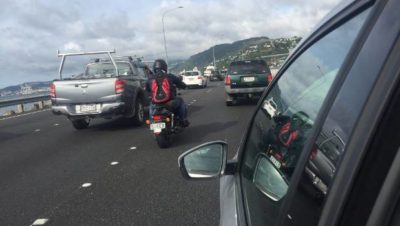Woodland Hills personal injury attorney Barry P. Goldberg is a frequent author on police pursuit cases and finding liability for serious injuries and death. The California Supreme Court has made it all but impossible to successfully bring police pursuit lawsuits based on the liberal application of Governmental Immunity. (See, Ramirez v. City of Gardena (2018) 5 Cal.5th 995, 997.) However, there are still some possibilities. Recently, a plaintiff personal injury lawyer discovered another method of “breaking through” the broad governmental immunity in Flores v. City of San Diego (September 15, 2022).
In Flores, Plaintiffs sued the City for wrongful death and negligence, in connection with the death of William Flores, who was operating a motorcycle that was the subject of a police vehicle pursuit when he crashed and was killed. The City moved for summary judgment on the ground that it is immune from liability under the grant of immunity provided for in Vehicle Code section 17004.7 (section 17004.7). Section 17004.7 grants immunity to an agency, shielding the agency from liability for collisions involving vehicles being pursued by peace officers, if the agency “adopts and promulgates a written policy on, and provides regular and periodic training on an annual basis for, vehicular pursuits . . . .” (§ 17004.7(b)(1))
On appeal, plaintiffs contended that the trial court erred in granting summary judgment, arguing that a number of the court’s legal conclusions are erroneous and that the court failed to acknowledge that there remain material facts in dispute as to whether the City is entitled to immunity under section 17004.7. Specifically, Plaintiffs raised the following contentions: (1) The trial court failed to apply California Code of Regulations, title 11, section 1081, which includes certain standards that govern the required training on vehicle pursuits, including an annual one-hour minimum time requirement; (2) A triable issue of material fact remains as to how many SDPD officers actually watched the vehicle pursuit training video in full, and this unresolved factual question means that the court could not conclude that the City met the training requirement set out in section 17004.7; (3) The trial court failed to consider that the City’s vehicle pursuit policy “is defective as a matter of law” because the policy did not, “include[ ] a provision stating, ‘[s]upervisory responsibility shall include management and control of a pursuit’ ”; (4) The trial court erred by “not continuing the hearing or denying the motion for summary judgment because facts essential to justify opposition to the motion may exist but could not be obtained because of the City’s refusal to produce [certain] evidence” (some capitalization omitted); (5) To the extent the trial court relied on Government Code section 815.2 in ruling on the motion for summary judgment, the court erred; and (6) Under the authority of Ramirez, supra, 5 Cal.5th 995, the trial court was required to determine that the City had “meaningfully implement[ed]” its pursuit policy before concluding that the City was entitled to immunity under section 17004.7, but the court failed to address this issue and therefore erred in ruling that immunity applied.
The Court concluded that the vehicle pursuit policy training required by section 17004.7 must meet certain basic standards that are set forth in California Code of Regulations, title 11, section 1081, as adopted by the Commission on Peace Officer Standards and Training (the POST Commission), including the annual one-hour minimum time standard set out in that regulation, before a governmental entity is entitled to immunity under the statute.
First. the City failed to present undisputed evidence that the training it provided in the year prior to the incident at issue met the annual one-hour standard. Second, the City failed to dispute the fact, put forth by plaintiffs, that the training implemented by the City comprised a single video of less than half the required one-hour duration.
The Court held, In the absence of training that met the standards imposed by Regulation 1081, as required by section 17004.7, the City was not entitled to immunity under that statute, as a matter of law. Therefore, the summary judgment in favor of the City was erroneously granted, and the judgment was reversed.
The Court went through the various topics of training the were required if a City can successfully assert the police pursuit immunity:
“(b) The course or courses of basic training for law enforcement officers and the guidelines shall include adequate consideration of each of the following subjects:
“(1) When to initiate a pursuit.
“(2) The number of involved law enforcement units permitted.
“(3) Responsibilities of primary and secondary law enforcement units.
“(4) Driving tactics.
“(5) Helicopter assistance.
“(6) Communications.
“(7) Capture of suspects.
“(8) Termination of a pursuit.
“(9) Supervisory responsibilities.
“(10) Blocking, ramming, boxing, and roadblock procedures.
“(11) Speed limits.
“(12) Interjurisdictional considerations.
“(13) Conditions of the vehicle, driver, roadway, weather, and traffic.
“(14) Hazards to uninvolved bystanders or motorists.
“(15) Reporting and post pursuit analysis.
One can see how these basic training topics can really cut down on police pursuit injuries and death. It is our office’s experience that the various police forces have become somewhat lax in developing and implementing police pursuit procedures and oversight. Basically, if anyone in a position of authority okayed the pursuit, the governmental entity was in the clear pursuant to Ramirez v. City of Gardena (2018) 5 Cal.5th 995, 997.
After the holding in the Flores case, we would expect police agencies to go back and make certain that their officers are properly trained and that the training is well documented. Moreover, the training must be current and comprehensive. Otherwise, the governmental immunities for police pursuit injuries and death will not apply. Our office stands ready, willing and able to answer any and all questions about police pursuit injuries and death cases.








